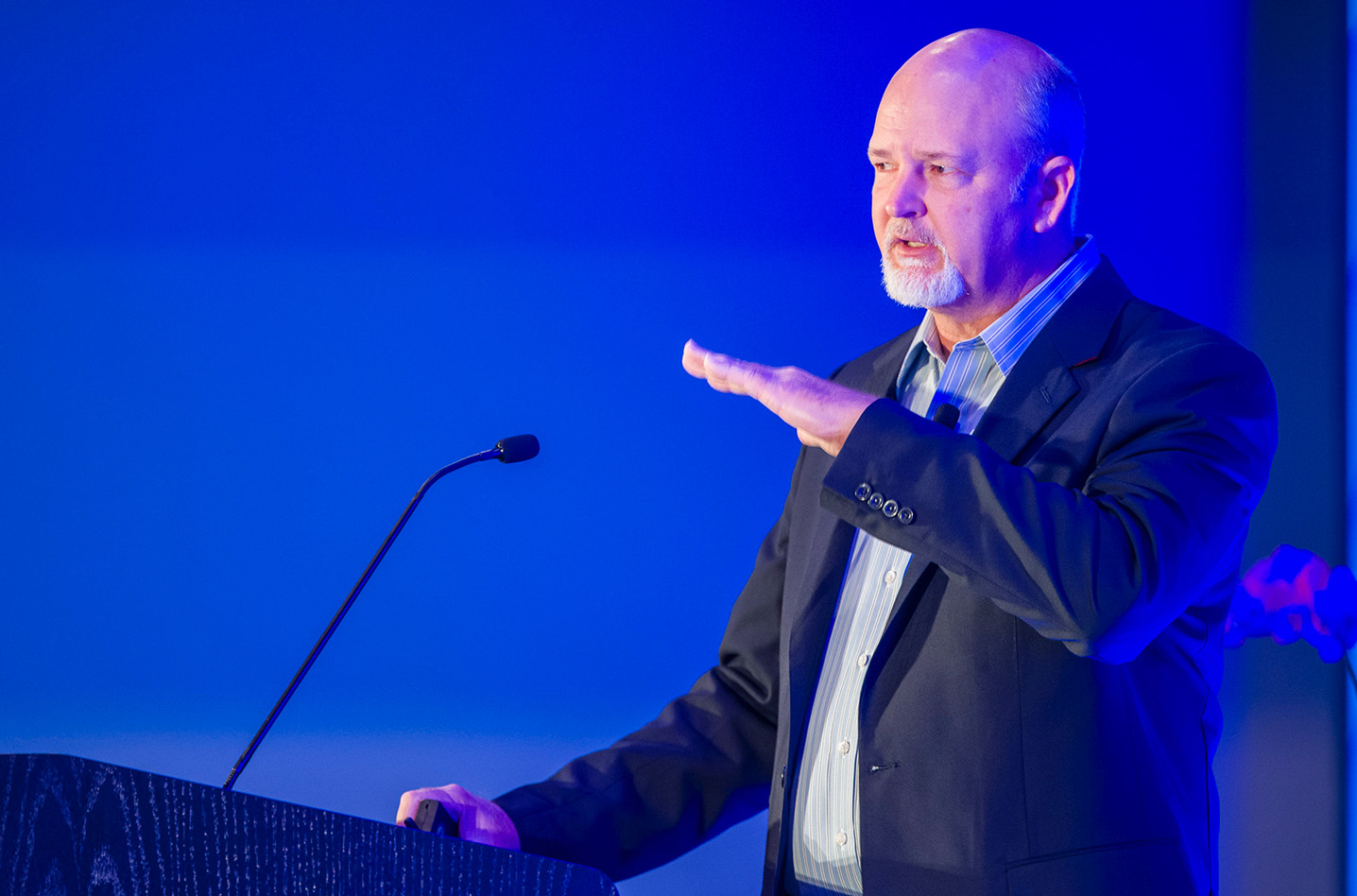Risk Management in Focus at 2023 Single-Pilot Safety Standdown

Oct. 16, 2023
Case studies of accidents – and the important lessons operators can learn from them – was in focus at the 2023 Single-Pilot Safety Standdown, taking place prior to the opening of the 2023 NBAA Business Aviation Convention & Exhibition (NBAA-BACE).
NBAA Safety Committee Chair Paul BJ Ransbury, of Aviation Performance Solutions, kicked off the event with a short overview of the NBAA Safety Committee and the committee’s visions, as well as recent single-pilot business operations statistics.
Accident case studies present a powerful opportunity for pilots to learn risk mitigation and management strategies, said NBAA Safety Committee Single-Pilot Working Group Lead Rosa Lee Argotsinger, of Textron Aviation, before introducing Jonathon Hirsch, from Piper Aircraft Company and Peter Basile, from Textron Aviation, to share specific case studies and draw lessons from those tragedies.
 Hirsch described the 4M model of safety: mission, man, machine and medium (or environment) as a basis for safe single-pilot operations, and used the model to walk through a Sept. 1, 2020, accident involving a Piper PA-28 near Walker, MN.
Hirsch described the 4M model of safety: mission, man, machine and medium (or environment) as a basis for safe single-pilot operations, and used the model to walk through a Sept. 1, 2020, accident involving a Piper PA-28 near Walker, MN.
In this scenario, the pilot (the man) had suffered several personal tragedies in the few years leading up to the accident and the flight itself was part of a permanent relocation (the mission). During the flight, air traffic controllers noted some erratic behavior and responses consistent with hypoxia symptoms. Controllers asked the pilot to land near St. Cloud, MN, for evaluation. The pilot landed but refused physical evaluation. He also refueled the aircraft (the machine) earlier than planned and continued his journey, which led him directly to a large storm system (the medium or environment).
Ultimately, and surprisingly, the NTSB determined the probable cause of the accident to be the pilot’s impairment from the effects of an undiagnosed brain tumor.
“This is why as investigators it is so important to get all the data. Sometimes the story is different from what the initial indicia might show,” said Hirsch.
Basile described the Dec. 29, 2016, Cleveland, OH accident involving a Cessna 525C (CJ4), which departed Burke Lakefront Airport (BKL) for Ohio State University Airport (OSU) in Columbus. The pilot had more than 300 hours in a Citation Mustang and added a CJ type rating on Dec. 8 of the same year, then attended a recurrent training course at Flight Safety International. At the time of the accident, he had fewer than 60 hours in type and nine hours of PIC time in type. Weather conditions were marginal VFR, but the pilot entered instrument meteorological conditions right after takeoff.
The NTSB found the probable cause to be controlled flight into terrain pilot spatial disorientation with contributing factors of pilot fatigue, mode confusion related to status of autopilot and negative learning transfer due to differences compared to pilot’s previous flight experience.
“The pilot was overloaded and he was likely tired,” said Basile, who also explained the pilot pressed the wrong button on the autopilot, the result of confusion with a previous autopilot system he had used.
“It’s important to discuss accidents like this because we continue to see these factors over the years – fatigue, mode confusion and negative learning transfer,” Basile explained, adding of the Citation accidents occurring between 2008 and 2023, fatal crashes were most often loss-of-control accidents with spatial disorientation as probable cause or contributing factors in half of those accidents.
TEM Model
Capt. Rich Loudon, of Alaska Airlines, described the traditional threat and error management (TEM) model, which requires a pilot to anticipate, respond to and mitigate threats or risk, and typical flight risk assessment tools (FRAT).
While experts have advocated for these methods for years, Loudon noted airline pilots report finding these traditional briefing methods related to TEM or FRAT measures irrelevant or too time consuming.
Behavioral science points to a more effective solution: pattern matching.
“Our training programs should be focused instead on identifying pattern matches for our crews”, said Loudon, who recommends pilots conduct a briefing by building a story, establishing goals, relevant cues and expectations.
He also encouraged pilots conducting single-pilot operations to verbalize each briefing, as the act of speaking out loud engages the brain at a different level.
I’M SAFE
The weakest link in the aviation safety system is the human, said Quay Snyder, MD, MSPH, of Aviation Medicine Advisory Service, explaining when machines fail it’s often in significant ways, but “in humans, we fail in very subtle ways.”
“Fitness for duty is a soft threshold,” Snyder said, adding the individual has control over several variables related to fitness for duty and mitigating the risk of pilot error.
Snyder shared techniques for ensuring fitness to fly, including using a pre-flight checklist for your own fitness prior to each flight, such as the I’M SAFE (illness, medications, stress, alcohol, fatigue and emotion) checklist; utilizing good sleep hygiene, dietary and hydration practices and managing alcohol use.
Finally, representatives from owner-pilot associations shared the importance of participating in these groups to share experiences and improve risk mitigation in the owner pilot community.
Any person who attends an NBAA convention, conference, seminar or other program grants permission to NBAA, its employees and agents (collectively "NBAA") to record his or her visual/audio images, including, but not limited to, photographs, digital images, voices, sound or video recordings, audio clips, or accompanying written descriptions, and, without notifying such person, to use his or her name and such images for any purpose of NBAA, including advertisements for NBAA and its programs.
Related Articles
November 27, 2023
2023 Small Operator Symposium Recordings: Vital Learning Tool for NBAA Members
November 1, 2023
NBAA Thought Leadership Webinar: Ears to the Ground at 2023 NBAA-BACE
October 26, 2023
2023 NBAA-BACE: ICYMI Newsletter
October 20, 2023


 International Business Aviation Council Ltd.
International Business Aviation Council Ltd.